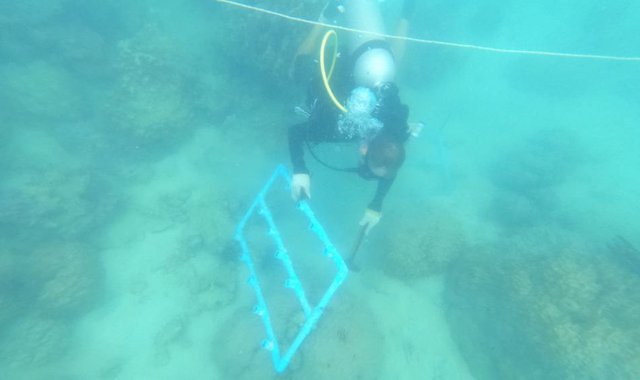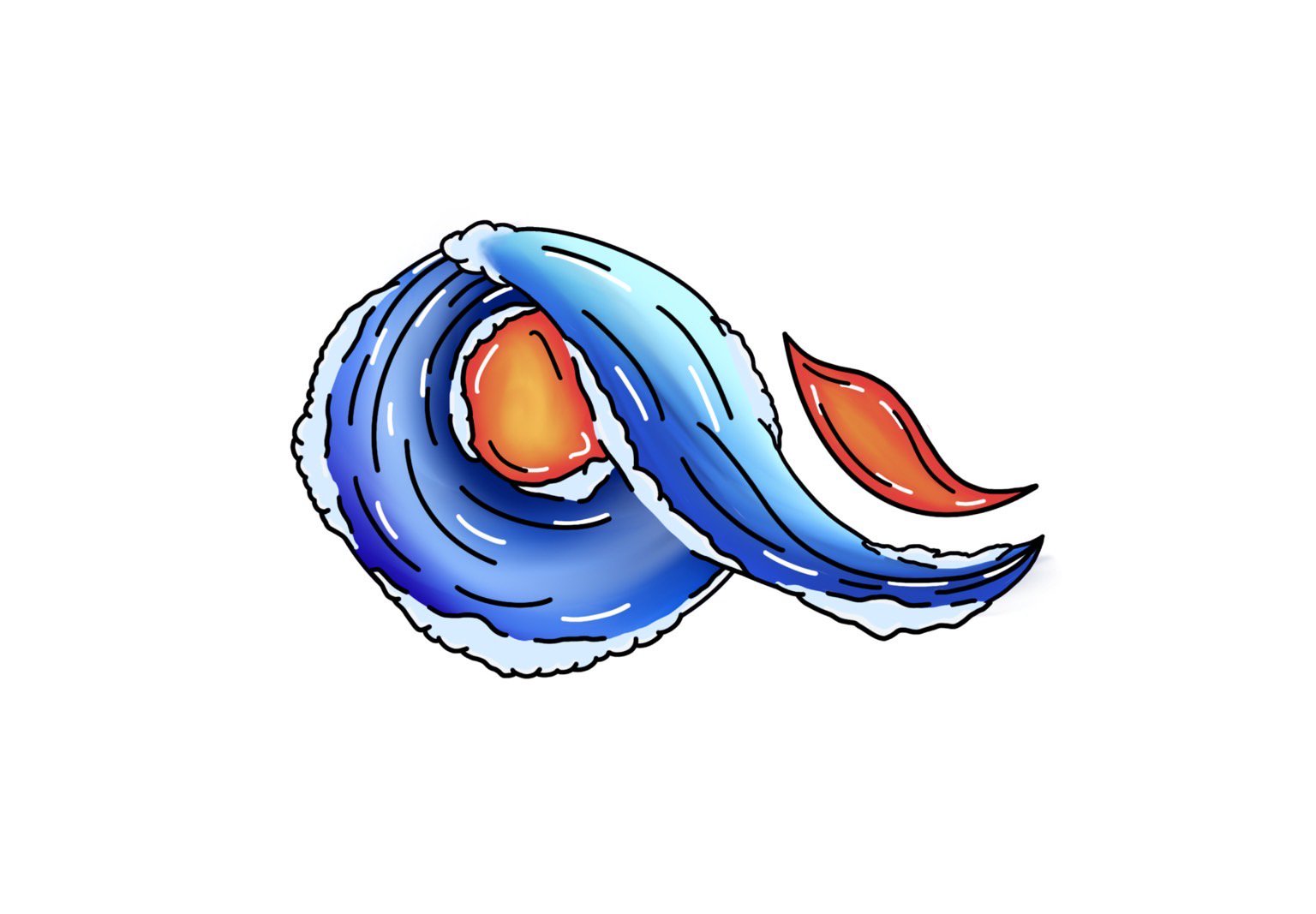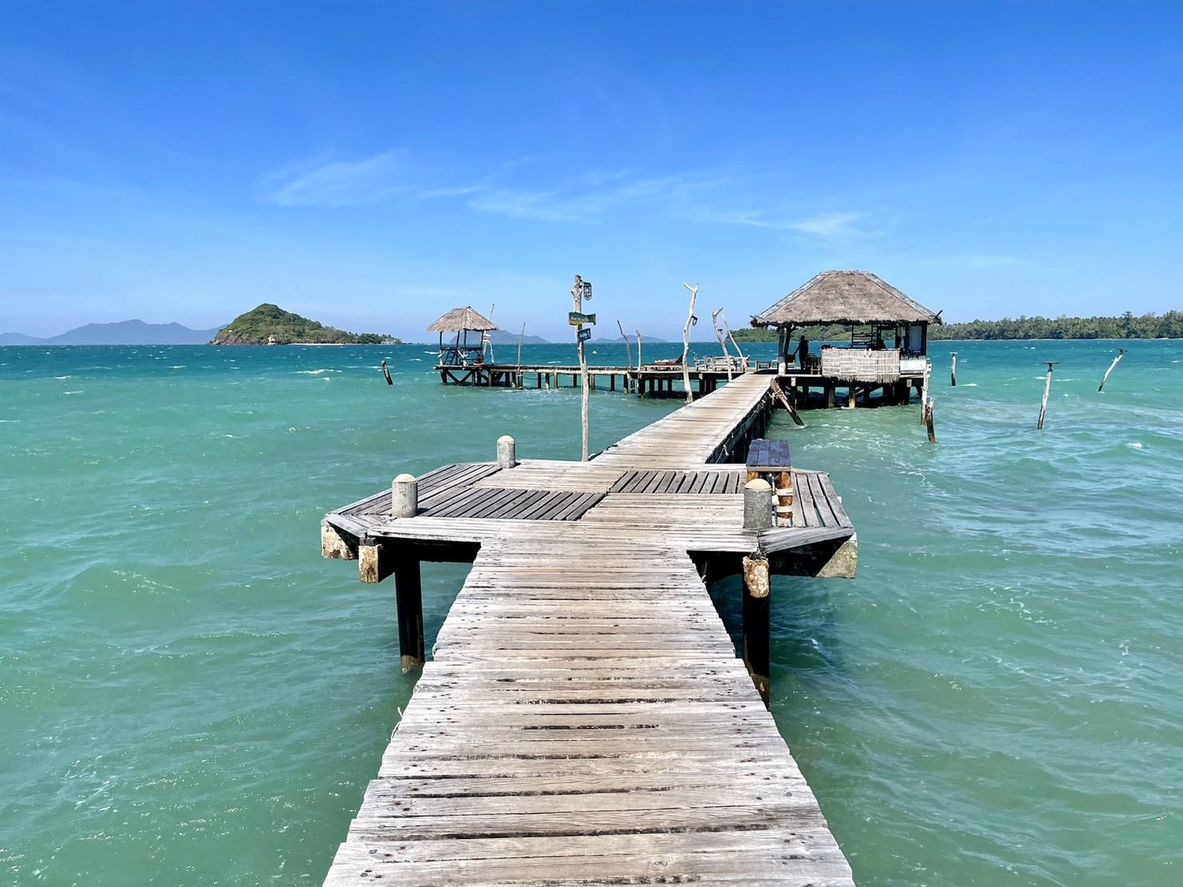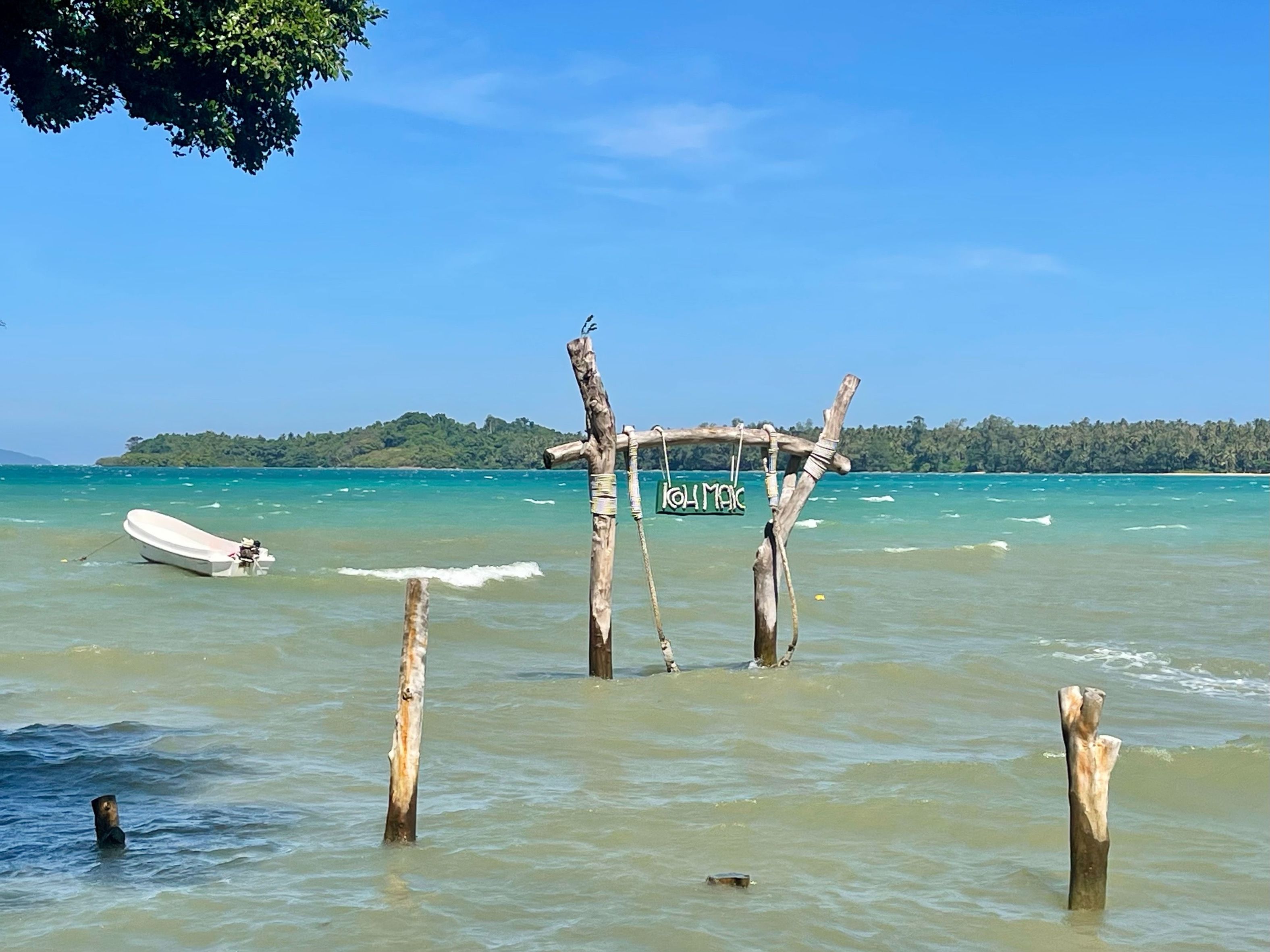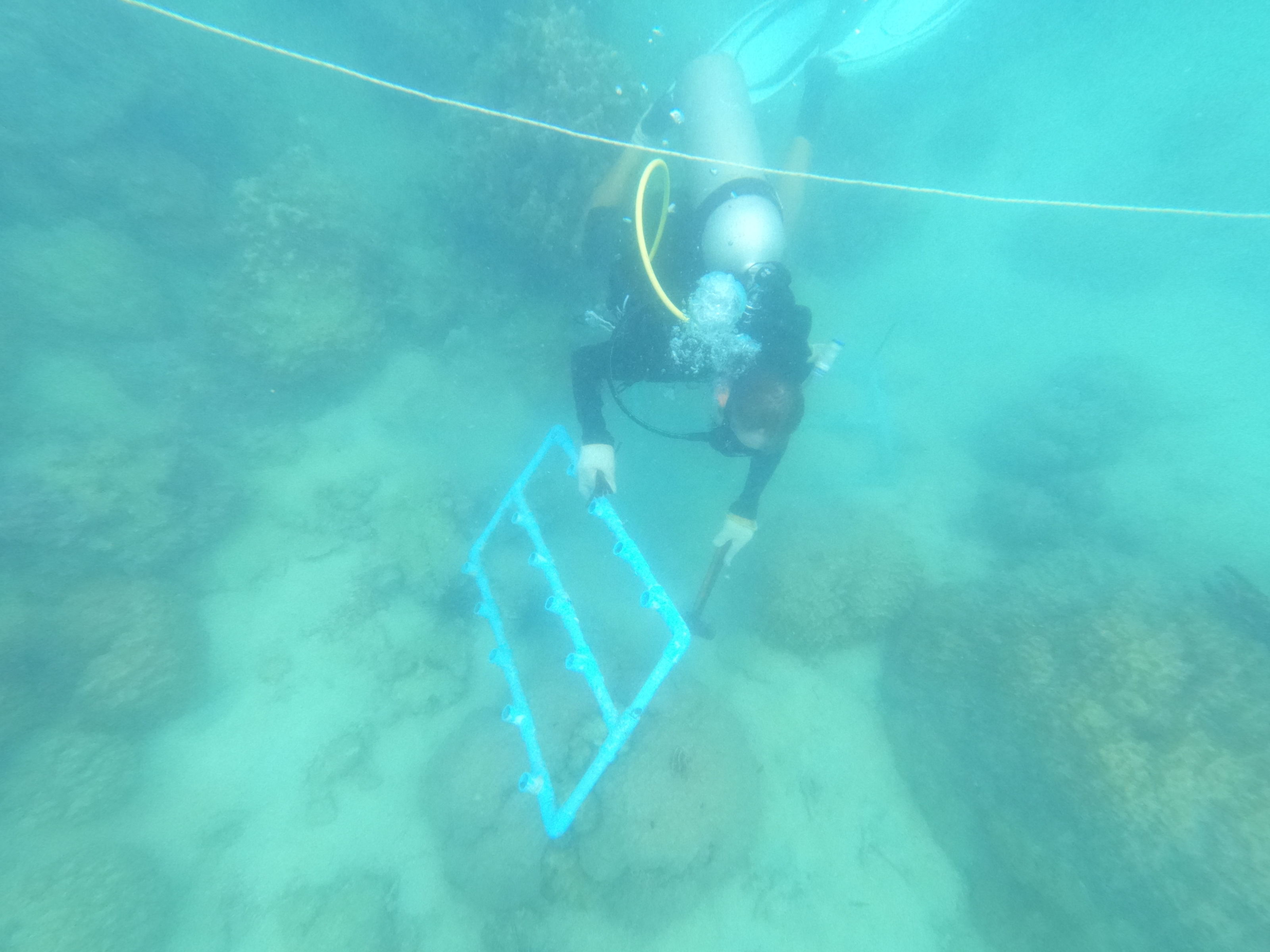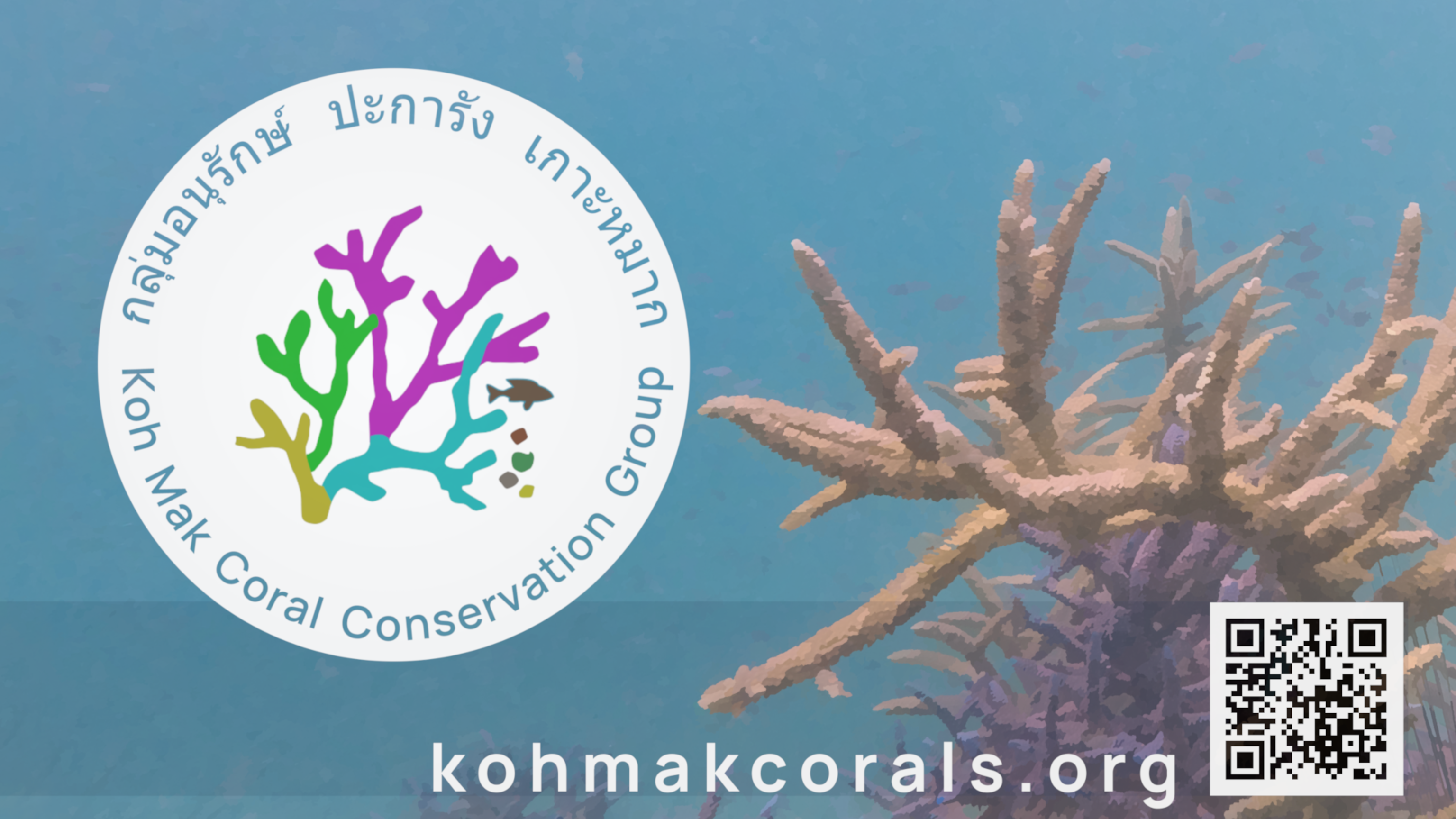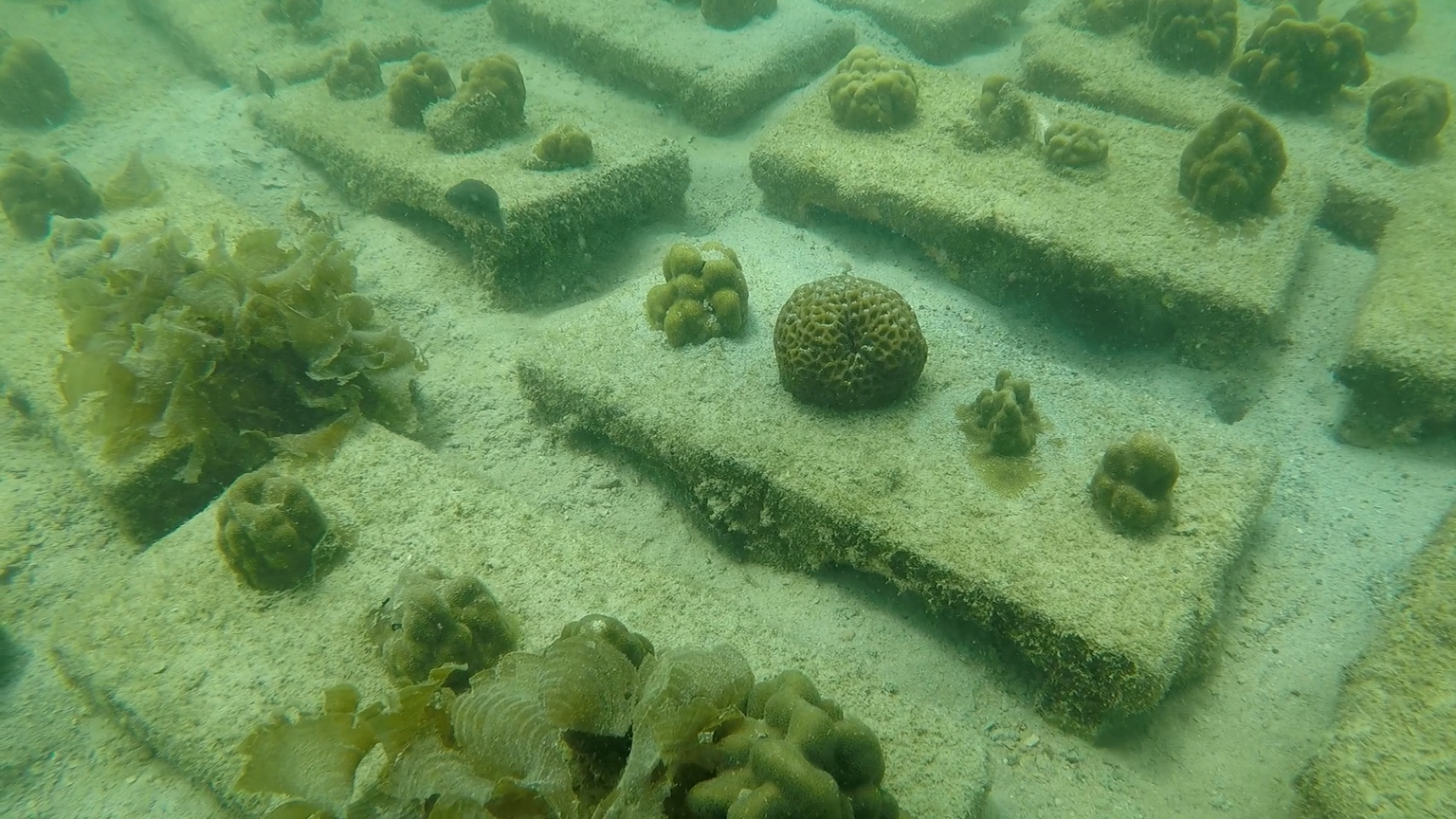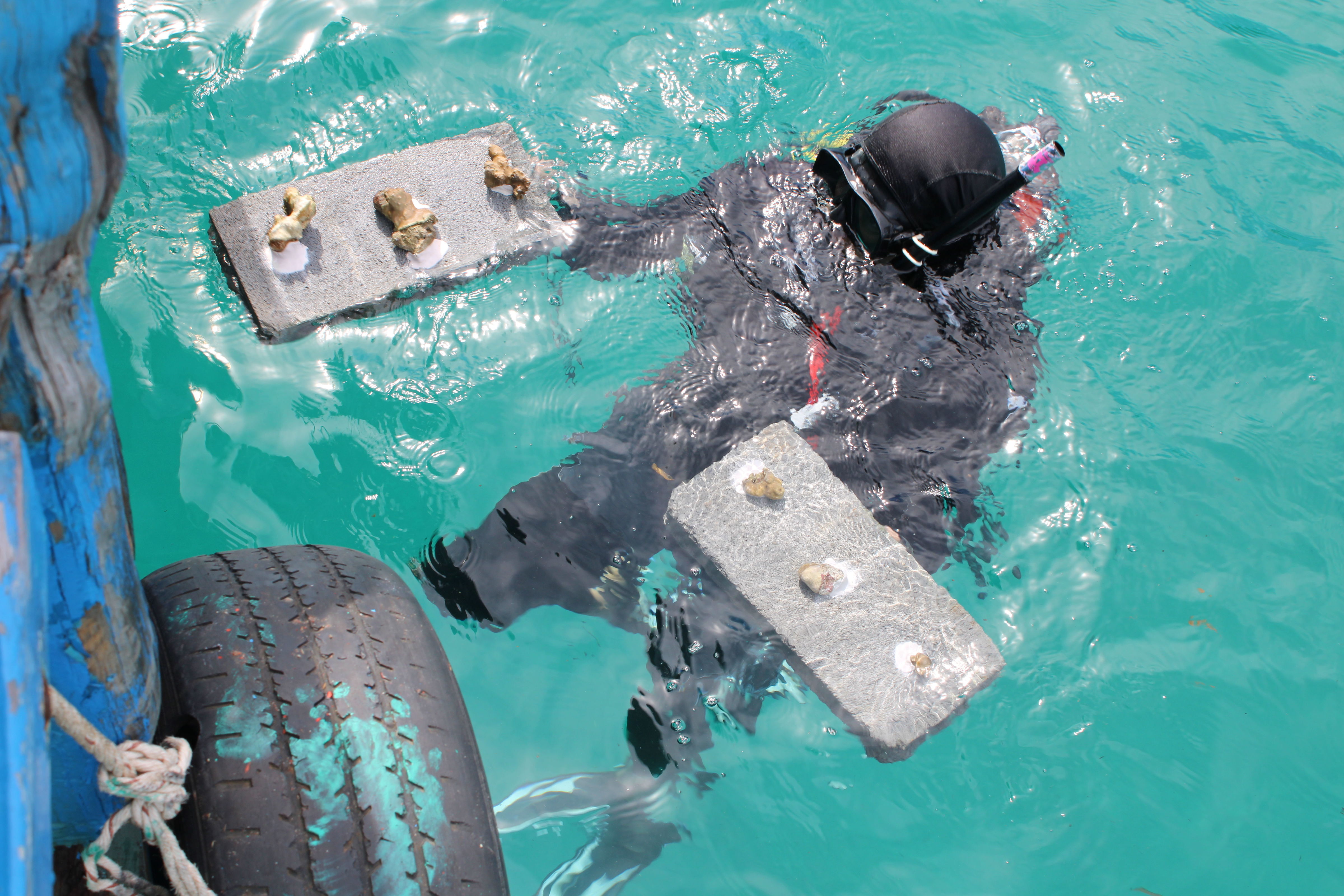Social Issues and Solutions
Part One: Please explain the causes/origins of the problem that your project aims to address. How urgent and severe is it? And, how does this problem impact the community, society, or country? Please provide references to reliable statistics or data sources.
Assistant Professor Dr. Thon Thamrongnawasawat, the Deputy Dean of the Marine Science Department at the Faculty of Fisheries, Kasetsart University, states that while Koh Mak has an area of approximately 12.3 square kilometers, it boasts a large coral reef area of about 9.7 square kilometers. It is considered to have the largest coral reef area in the eastern region and the widest coral reef in Thailand. Importantly, in the northeastern inclined area of the island, there is a seagrass meadow. Coral reef rehabilitation is necessary due to global warming, which impacts coral bleaching and eventual death. Additionally, irresponsible tourism activities such as swimming, snorkeling, trampling on coral reefs, and boat driving for sea activities like diving and fishing, especially the improper disposal of anchor lines near the coral reefs, lead to breakage and damage. Moreover, illegal fishing practices, such as large fishing vessels entering the area and using explosives and cyanide to catch a large quantity of fish, result in harm to the coral reefs.
The damage to coral reefs directly affects the ability of marine animals to reproduce, as they rely on these reefs for laying eggs, feeding, and nurturing their offspring. This area features numerous seagrass meadows known for their excellent ability to absorb and store carbon dioxide, referred to as Blue Carbon. These seagrasses serve as a food source for endangered species such as sea turtles and dugongs. However, replanting seagrass in this area is challenging due to coral reef debris on the seabed.
Economically, Koh Mak is a significant spot for marine tourism. If marine biodiversity decreases, it will result in losing a competitive advantage compared to other tourist destinations, impacting the local economy.
The Bank of Thailand has published an article discussing Koh Mak as a tourism model that capitalizes on its strengths in rich marine natural resources. It portrays an image and strategy emphasizing low-carbon tourism, avoiding activities that cause pollution, reducing energy and water consumption in hotel accommodations, and preserving the traditional way of life in the community. These aspects serve as attractive features, drawing high-quality tourists. This is evident from the increase in Thai and international tourists visiting Koh Mak, which rose by 15% in 2019 compared to 2013. Simultaneously, income has increased by almost 50% during the same period.
Due to limited funds for marine conservation and the possibility of other pressing issues in areas outside Koh Mak, restoring and preserving coral reefs may be challenging. However, the community's awareness and dedication make coral reef rehabilitation feasible. The key missing factor is government funding for reef maintenance. Taking swift action is crucial to fully restore coral reefs and enhance competitiveness in fishing and global tourism. Previously, coral reefs were protected wildlife under the Wildlife Reservation and Protection Act of 1992, prohibiting hunting, harm, possession, trade, or breeding without permission. However, the matter of coral reef restoration had been neglected for a long time until Mr. Nopadol Suttithornakul (Uncle Aung) took the initiative to gather community members and establish the Koh Mak Coral Conservation Group. This was done to legally conduct coral planting activities, obtaining permission for reef maintenance from the Department of Marine and Coastal Resources. This was successfully accomplished by the end of the year 2021.
Part Two: Please explain in detail the method of solving this problem. Have you used this method to address similar issues before? What were the results? If other organizations are already working on solving this problem, how does your project differ?
Mr. Nopadol Suttithornakul (Uncle Aung) founded the Koh Mak Coral Conservation Group to undertake coral reef restoration. They create artificial reefs using robust materials such as bricks, steel frames, concrete pipes, concrete blocks, iron grates, epoxy, wire ties, and nails. These structures are durable against sea currents, have stable weights, and minimize movement, providing a secure attachment point for marine life. Additionally, they become a food source for larger fish in the form of a food web, positively impacting the local marine environment. This effort creates a habitat for marine life, serving as a starting point for the regeneration of coral reefs and enhancing marine biodiversity.
To support Uncle Aung's initiative, Vini Thai Company donated PVC pipes to create 150 nurseries. Each nursery can cultivate around 12-15 coral branches. Through this method, the Koh Mak Coral Conservation Group has successfully planted approximately 1,800 coral branches, contributing to the ongoing efforts in coral reef restoration.
Uncle Aung placed PVC nurseries around Koh Mak, extending to Koh Kood, with approximately 5 nurseries at each location. This strategic placement aims to assess the water conditions to determine the most favorable ones. Uncle Aung explained that after observing the area for about 2 years following the artificial reef deployment, it was noticed that small fish started to inhabit the region. Larger fish would then follow, circling the outer areas. The installation of artificial habitats attracts marine life, providing shelter and increasing the chances of breeding. This, in turn, enhances both the quantity and diversity of fish species, leading to an improvement in fishing conditions in the area. However, without artificial reefs to offer hiding spots for small fish, the presence of larger fish may not be as prominent.
The Department of Marine and Coastal Resources (DMCR) and the Thai Maritime Enforcement Command Center (Thai MEECC) collaborate to assist in the supervision of fisheries law enforcement and assess the suitability of artificial reef deployment. If any peculiarities or irregularities are observed in the planted areas, these government agencies will dispatch experts from Kasetsart University to provide oversight and recommendations.
Project Implementation Steps: Describe from the beginning to the end how the project is carried out. How does the project address and solve the problem? Provide a detailed explanation of each step and activity.
Starting with coral reef fragments that are still alive but broken in nature, they are soaked in water to prepare for planting. PVC pipes are used to create nurseries measuring 60 by 120 centimeters. Each nursery has pipes for attaching coral fragments (in a branching pattern), with approximately 15 branches per nursery. The soaked coral fragments are then fastened to the PVC pipes before being inserted into a PVC bed, which serves as the nursery. Once ready, divers will take the nurseries to the desired underwater location and secure the PVC beds beneath the water surface. They can be wedged into rocks, placed in crevices, or attached using epoxy glue. The coral reefs will be covered with limestone around the PVC, making them inconspicuous. Crucially, in placing the artificial reefs, there must be openings and gaps to allow water to flow freely, facilitating easy access for marine organisms to inhabit them.
In the case of coral fragments, specifically the boulder coral type (Porites lutea) or a coral shape resembling a block, concrete blocks with flat surfaces are used to create artificial reefs placed in the water. This is done to increase the attachment area for organisms that need a substrate to settle, such as coral and oysters. The attachment is facilitated using epoxy glue applied to the base for adhesion. Another method involves using long iron nails, approximately 2 inches in length, driven into the substrate to serve as anchors. Then, a lashing line is used to secure the coral branches to the iron nails.
After that, it is necessary to regularly inspect whether the coral fragments are properly connected, both on the sides and on the top. When the branches grow, they tend to connect, so it is essential to check every week. Additionally, it is crucial to ensure that different colors and types of coral fragments are not placed together. If connected, the branches will die, and the connection will not be successful, resulting in exposed wounds. For example, green-colored coral fragments should not be placed adjacent to purple-colored ones, and boulder coral fragments should not be connected to other types. Boulder coral fragments grow faster, and if placed together, they may shade the slower-growing fragments, leading to their death. As they grow, it is essential to relocate them according to their natural alignment.
In February 2024, Uncle Aung is planning to initiate the relocation of coral fragments nurtured in PVC frames before they fuse together. His plan involves removing these fragments and using epoxy to affix the larger coral pieces onto artificial boulders made from cement. As an alternative, some fragments will be transplanted into sandy grooves where old coral fragments naturally settle, enhancing their aesthetic appearance. The original PVC frames will be reused for subsequent coral fragment nurturing, ensuring the sustainability and richness of the existing coral reef.
Number of Beneficiaries or Things Gaining Benefits (Units): Before initiating the project, describe the characteristics of the target group and what you anticipate will be the outcomes or benefits for them. How do you envision the target group before the project, and what do you anticipate happening after the project is completed?
The population, according to the census, and the resident population on Koh Mak is approximately 1,000 people, not including the communities on nearby islands such as Kradad Island, Rayang Island, Rayang Nok Island, Ghost Island, Kam Island, Nok Island, and Nai Island.
Before the start of this project, artificial coral reefs were grown in PVC frames to nurture them to a sufficient size. The relocation process involves removing the corals from the PVC frames and using epoxy to attach the larger coral fragments onto artificial boulders made from cement. Alternatively, some fragments will be transplanted into the sandy grooves where old coral fragments naturally settle to enhance their aesthetic appearance. This results in complete and attractive coral reefs that attract tourists, especially those who focus on sustainable tourism, promoting the country's economy.
Additionally, the thriving coral reefs of Koh Mak help preserve the richness of the seagrass ecosystem in the northeast waters, considered a seagrass haven within the coral reef. This contributes to higher carbon sequestration compared to seagrass outside the coral reef area. The fertility of the seagrass can attract and sustain endangered species like sea turtles and vulnerable species like dugongs, as it serves as their food source.
How is the problem-solving process conducted?
Expected Outcomes: How do you anticipate the results will unfold?
Coral reefs serve as habitats for juvenile fish, increasing both the quantity and diversity of fish species. Uncle Aung explains that, based on observations, after planting artificial reefs for about 2 years, small fish are seen residing in the area. Subsequently, larger fish follow, circulating around the vicinity. The installation of artificial habitats, such as artificial reefs, attracts marine life to seek refuge and increases the chances of breeding. This improvement enhances our fishing activities. However, without artificial reefs providing hiding places for small fish, larger fish are less likely to appear.
Coral reef structures positively impact seagrass by reducing wave impact (hydrodynamics), especially during storms. This protection benefits seagrass meadows by facilitating sediment accumulation, preventing erosion, and maintaining sediment in place. Seagrass meadows are particularly important for carbon sequestration, outperforming terrestrial forest ecosystems by up to 10 times. They excel in storing carbon both in biomass, through photosynthesis, and by trapping sediment runoff from other ecosystems. Research indicates that when coral reef structures are connected to seagrass meadows, the accumulation of sediment organic carbon increases, leading to better preservation of organic matter in the soil.
Moreover, coral reef structures contribute to protecting coastal areas from erosion and sediment erosion caused by wave impacts. This interaction underscores the importance of maintaining the connection between coral reefs and seagrass meadows for their ecological synergy and the preservation of blue carbon.
This seagrass meadow serves as a representative of ecosystem services and has the potential to mitigate climate change impacts. Seagrass plays a crucial role in nurturing marine life, providing a breeding ground for small marine creatures, serving as a source of food, and offering shelter for various marine species. These include the black-blotched porcupinefish, long-spined sea urchin, swimming crab, horned sea star, four-lined terrapin, flatworm, flower sea urchin, nudibranch, sea anemone, white spot anemone shrimp, giant clam, and black sea cucumber.
The improved economy is attributed to the influx of tourists. With more people visiting, there is an increased demand for accommodation, transportation services, and dining options, leading to an overall enhancement of the community. The sustainable development of high-quality tourism further underscores the success of Koh Mak, which has been internationally recognized as a sustainable tourist destination, securing a spot in the Green Destinations Top 100 in 2022, as organized by the Green Destinations Foundation. In addition, Koh Mak has been voted as a Low Carbon Destination by the Special Area Development Management Organization for Sustainable Tourism.
Owner Project
Mr. Arin Thongtang (In)
Miss. Arisa Thongtang (Aim)
Arinarisathongtang@gmail.com
